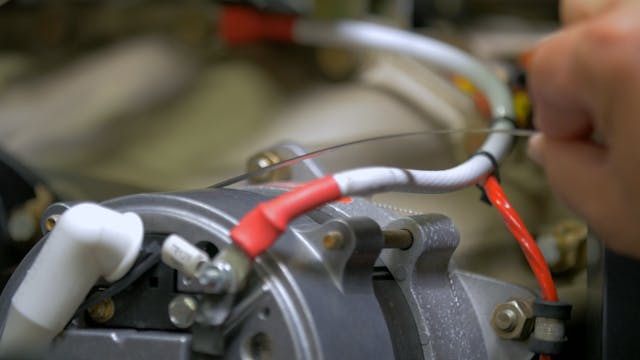Maintain adherence with reliable regulatory compliance assistance for your projects.
Maintain adherence with reliable regulatory compliance assistance for your projects.
Blog Article
Leading Tips for Effective Electrical System Troubleshooting
Troubleshooting electrical systems calls for a methodical technique, based in a comprehensive understanding of electric principles and security procedures. By acquainting oneself with circuit components, making use of essential tools, and sticking to an organized examination approach, specialists can successfully recognize and resolve problems. The nuances of efficient repairing expand beyond mere technical knowledge; comprehending how to record searchings for and prioritize security can substantially affect end results. As we explore these important aspects additionally, it comes to be clear that understanding this procedure is not simply beneficial however vital for success in the field.
Understand the Fundamentals
Comprehending the basics of electrical systems is important for effective troubleshooting, as a strong foundation allows professionals to detect and settle concerns a lot more successfully. A detailed grasp of electrical principles, such as voltage, existing, resistance, and power, is important in determining the origin creates of issues. Voltage is the electrical prospective difference that drives present with a circuit, while resistance opposes the flow of current, affecting the overall capability of the system.
Experience with circuit parts, including resistors, capacitors, diodes, and changes, is also vital. Each component plays an unique duty in circuit actions and can influence performance when malfunctioning. Furthermore, understanding series and parallel circuit setups is vital, as these plans affect the distribution of voltage and present within the system.
Specialists need to be mindful of possible threats, such as shock and short circuits, to implement secure troubleshooting methods. By grasping these foundational ideas, professionals enhance their capacity to perform reliable diagnostics and repair services, ultimately leading to improved efficiency and integrity of electric systems (electrical system troubleshooting).
Gather Necessary Tools
Reliable troubleshooting of electric systems requires the appropriate collection of tools to identify and deal with concerns precisely. A well-appointed professional can significantly boost effectiveness and performance in determining troubles. Crucial devices consist of a multimeter, which gauges voltage, current, and resistance, enabling precise assessments of electrical parts. Clamp meters are also useful for gauging present without separating the circuit, making certain security and convenience.
In addition, shielded hand devices such as screwdrivers, pliers, and cable strippers are critical for securely manipulating electric links. It is likewise advisable to have a circuit tester handy to verify the visibility of voltage in outlets and wires. For even more complex systems, a thermal imaging electronic camera can help detect overheating elements, showing possible failures.

Follow a Systematic Approach
Having collected the proper devices, the following action in repairing electric systems is to adhere to a methodical method. A methodical method ensures that service technicians can determine faults efficiently and accurately, lessening downtime and avoiding unneeded repair work.
Begin by reviewing the system's schematic representations and requirements. Comprehending the layout and operational parameters will offer context for diagnosing issues. Next, separate the issue location by utilizing a procedure of removal. This entails checking each component systematically, beginning with the power source and functioning in the direction of the lots.
Utilize screening devices, such as multimeters and oscilloscopes, to collect objective data regarding voltage, present, and resistance at different factors within the system. This empirical evidence will certainly direct your troubleshooting efforts and help to verify or remove prospective causes of failing.
Additionally, take into consideration environmental variables that may affect the system's performance, such as temperature level fluctuations or wetness access. A detailed assessment of wiring, connections, and parts will make sure that all possibilities are represented.
Record Your Findings
Thorough paperwork is important in the fixing procedure of electric systems. This practice not only aids in recognizing the root cause of the trouble yet likewise offers as a recommendation for future repairing initiatives.

In addition, keeping a log of parts replaced or fixings performed is invaluable. This details sustains inventory management and can aid examine the durability and reliability of details elements.
Ultimately, the documentation procedure ought to be extensive yet succinct, making it possible for easy access and review - electrical system troubleshooting. By focusing on in-depth documentation, specialists can produce a valuable data base that not only help in present troubleshooting yet likewise empowers future maintenance initiatives, thus boosting general system integrity

Prioritize Precaution
Recognizing the intrinsic threats connected with electric systems is crucial for making sure safety and security during troubleshooting. Electrical shock, burns, and equipment damage are simply a few of the potential threats that professionals encounter. Prioritizing security actions is not just a legal obligation yet additionally a moral necessary that safeguards both the technician and the surrounding environment.
Before starting any type of troubleshooting job, professionals should put on proper individual safety tools (PPE), consisting of shielded handwear covers, safety glasses, and flame-resistant clothing. Guaranteeing that the work area is dry and complimentary of clutter can substantially minimize the threat of crashes. In addition, it is crucial to de-energize circuits before starting any type of job, confirming that they are not live with using a multimeter or voltage tester.
Developing clear interaction procedures with staff member is additionally essential; this makes certain that every person understands prospective risks and the status of the electric system being serviced. Finally, having an emergency response strategy in position can show indispensable in case of an incident. By focusing on security measures, professionals can successfully mitigate threats and promote a safer office.
Final Thought
Efficient electric system troubleshooting relies on a detailed understanding of basic principles mechanical engineering industry support and a methodical technique. Focusing on safety steps makes sure the health of people involved and the integrity of the electrical system.
Report this page